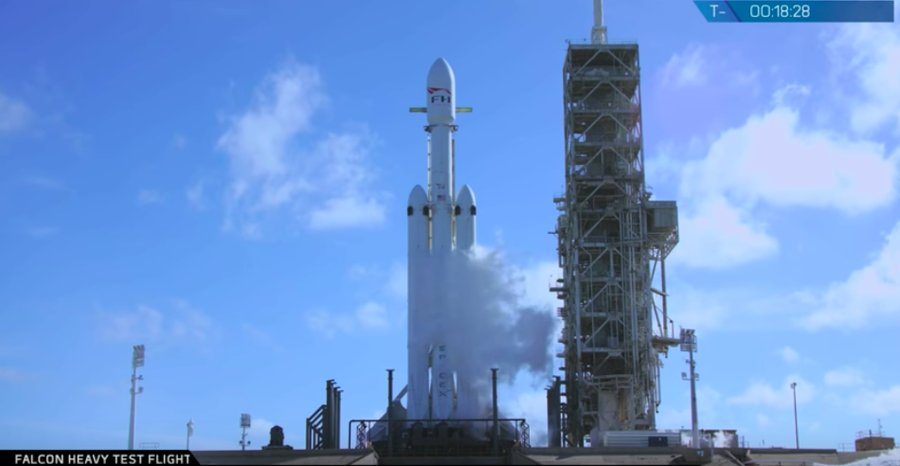Watch as new SpaceX jumbo rocket shoots a Tesla into space

The 23-story tall Falcon Heavy roared off its launch pad at 3:45 p.m. EST (2045 GMT) at the Kennedy Space Center in Cape Canaveral, from the same site used by NASA's towering Saturn V rockets to carry Apollo missions to the moon more than 40 years ago.
The rocket is carrying Elon Musk's own Tesla Roadster as a mock payload.
The two side-boosters successfully separated from the center main-stage rocket and flew back to Earth for safe simultaneous touchdowns on twin launch pads at Cape Canaveral Air Force Station. The center booster was expected for a return landing on a drone ship floating at sea, but its fate was not immediately known.
The launch had been delayed for more than two hours due to wind-shear conditions.
The successful liftoff of the 23-story-tall Falcon Heavy could be a key turning point for Silicon Valley billionaire entrepreneur Musk's privately owned Space Exploration Technologies, giving it a new edge on the handful of commercial rocket companies vying for lucrative contracts with NASA, satellite companies and the U.S. military.
Propelled by 27 rocket engines, the Falcon Heavy packs more than 5 million pounds of thrust at launch, roughly three times the force of the Falcon 9 booster that until now has been the workhorse of the SpaceX fleet. That's because it is essentially three Falcon 9's lashed together.
In comparison, the retired Saturn V rockets that propelled men to the moon generated more than 7.5 million pounds of thrust, and the Space Launch System rocket under development by NASA to boost its next-generation Orion manned capsule is eventually expected to stand 384 feet tall and generate 20 percent more thrust than even the Saturn V.
Because the new SpaceX heavy-lift rocket is essentially constructed from three Falcon 9s harnessed together side-by-side, Musk has said that one of the most critical points of the flight will come as the two side boosters separate from the central rocket in the first few minutes after blastoff.
"It's going to be an exciting success or an exciting failure," Musk said on a conference call on Monday.
Going along for the ride in a bit of playful cross-promotional space theater will be a cherry red, electric-powered sports car from Musk's other transportation enterprise, Tesla.
The sleek Tesla Roadster is supposed to be sent into a virtually indefinite solar orbit, on a path taking it as far from Earth as Mars. Adding to the whimsy, SpaceX has planted a mannequin wearing SpaceX's spacesuit in the driver's seat of the convertible.
If the demonstration flight succeeds, Falcon Heavy will rank as the world's most powerful existing rocket, with more lift capacity than any U.S. space vehicle since the era of NASA's Saturn V. Fittingly, the SpaceX rocket will depart from the same launch pad used for the Saturn V until its final mission in 1973.
Falcon Heavy is designed to place up to 70 tons into standard low-Earth orbit at a cost of $90 million per launch. That is twice the lift capacity of the biggest existing rocket in America's space fleet — the Delta 4 Heavy of rival United Launch Alliance, a partnership of Lockheed Martin and Boeing — for about a fourth the cost.
Like the Falcon 9, Falcon Heavy is built to capitalize on cost-cutting reusable rocket technology, with each of the three main-stage boosters designed to fly back to Earth for a soft landing after launch.
The two side boosters are supposed to touch down on landing pads at Cape Canaveral, while the central booster should land on a drone ship at sea.
Related News


